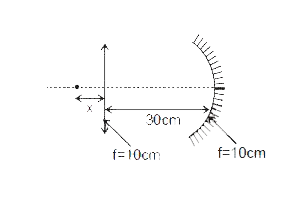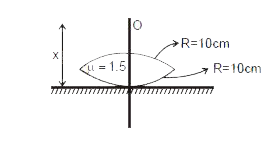In Fig. what should be the value of d so that image is formed on the object itself .
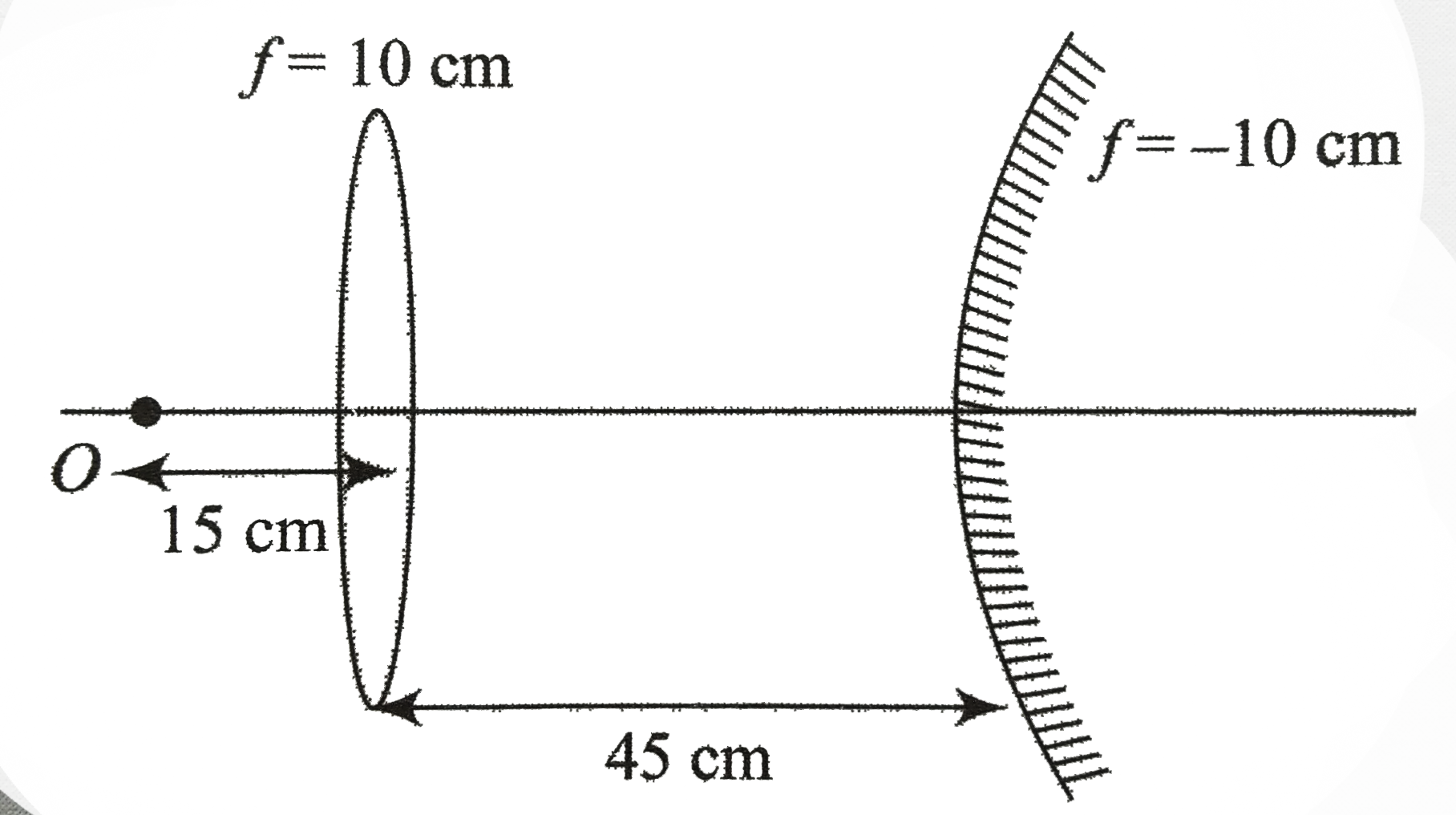
For convex lens
The refracted rays from lens should fall normally on the mirror for the image to coincide with the object.

Topper's Solved these Questions
- BOOK - CENGAGE PHYSICSCHAPTER - GEOMETRICAL OPTICSEXERCISE - Subjective26videos
GEOMETRICAL OPTICS
- BOOK - CENGAGE PHYSICSCHAPTER - GEOMETRICAL OPTICSEXERCISE - Single Correct221videos
GEOMETRICAL OPTICS
- BOOK - CENGAGE PHYSICSCHAPTER - GEOMETRICAL OPTICSEXERCISE - Exercise1.615videos
GEOMETRICAL OPTICS
- BOOK - CENGAGE PHYSICSCHAPTER - FRICTIONEXERCISE - QUESTION BANK1videos
FRICTION
- BOOK - CENGAGE PHYSICSCHAPTER - GRAVITATIONEXERCISE - Question Bank39videos
GRAVITATION
Similar Questions
Knowledge Check
- Question 1 - Select One
What should be the value of distance d so that final image is formed on the object itself. (Focal length of the lenses are written on the lenses.)
 A10cmB20cmC5cmDNone of these
A10cmB20cmC5cmDNone of these - Question 2 - Select One
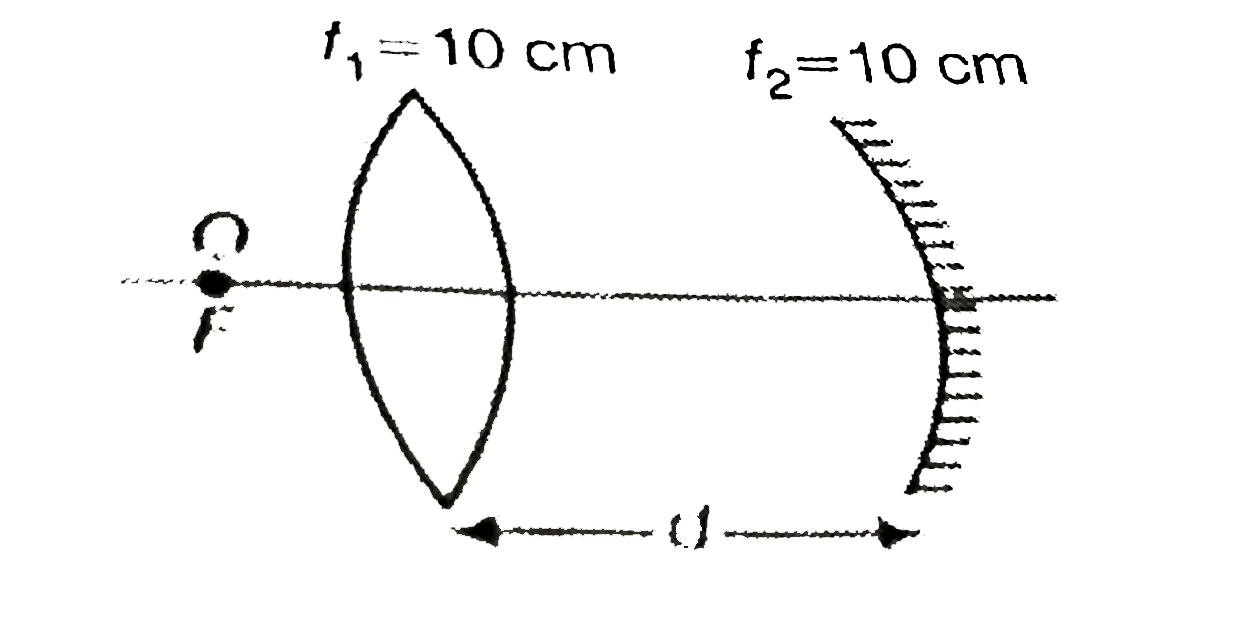
A point object is placed at the focus of the bio-conved lens. What should be the value of X, so the final image forms at infinity?A10cmB20cmC15cmDnone of these
Find out the value of x for which the image is formed on the object itself.
 View Solution
View SolutionWater (refractive index µ) is poured into a concave mirror of radius of curvature ‘R’ up to a height h as shown in figure. What should be the value of x so that the image of object ‘O’ is formed on itself?
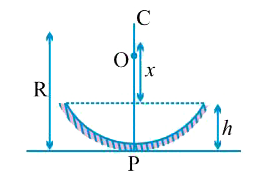 View Solution
View SolutionA diverging lens of focal length 12 cm and a converging mirror of focal length 10 cm are placed coaxially at a separation of 5 cm. Where should an object be placed so that a real image is formed at the object itself ?
View Solution(a) A point source S is placed at a distance of 15 cm from a converging lens of focal length 10 cm on its principal axis, where should a diverging mirror of focal length 12 cm be placed so that a real image is formed on the source itself?
(b) A diverging lens of focal length 20 cm and a converging mirror of focal length 10 cm are placed coaxially at separation of 5 cm. Where should an object be placed so that a real image is formed at the object itself?
(c) A converging lens of focal length 12 cm and a diverging mirror of focal length 7.5 cm are placed 5.0 cm apart with the principal axis coinciding where should an object be placed so that its image falls on itself?View SolutionA biconvex thin lens is prepared from glass (μ=1.5), the two bounding surfaces having equal radii of 25 cm each. One of the surfaces is silvered from outside to make it reflecting. Whee should an object be placed before this lens so that the image is formed on the object itself?
 View Solution
View SolutionA concave mirror of radius R is kept on a horizontal table. Water (refractive index =mu.) is poured into it up to a height h. Where should an object be placed so that its image is formed on itself ?
 View Solution
View Solution


